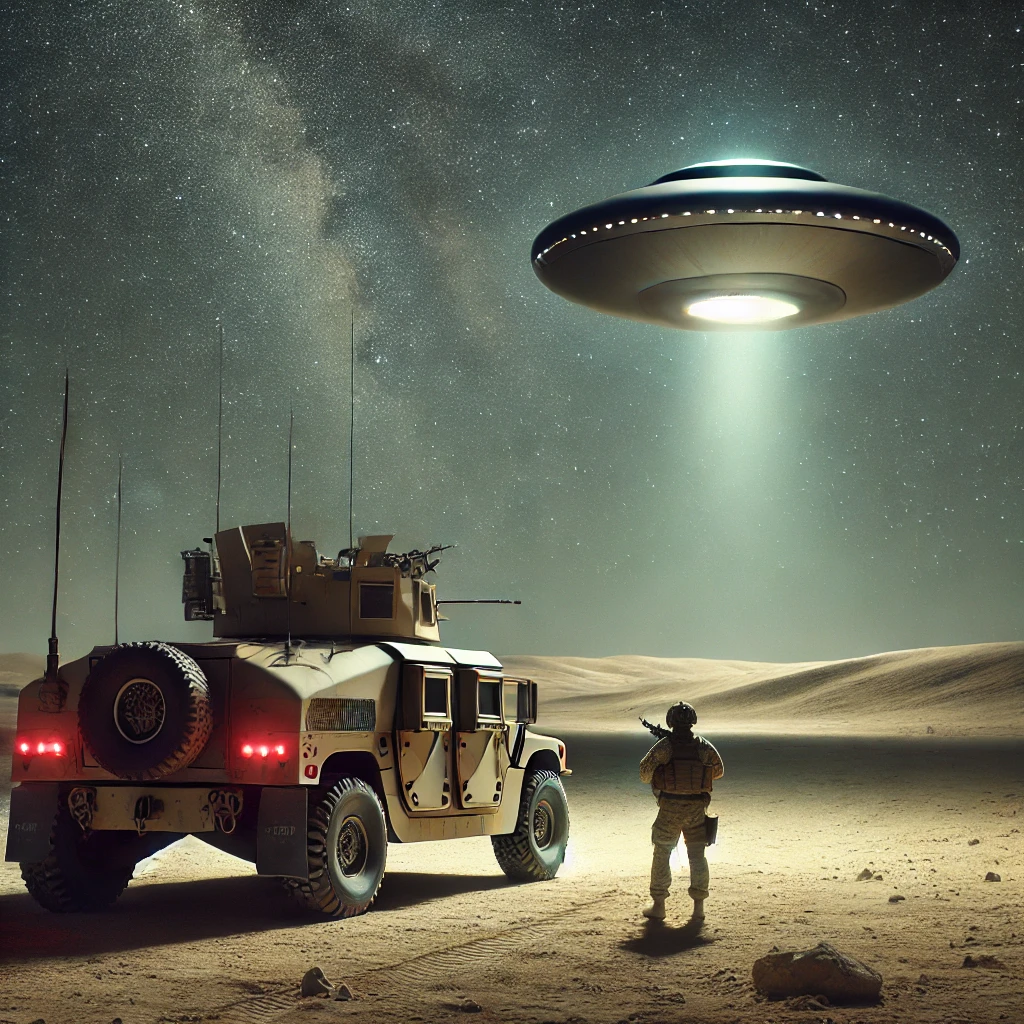The Iraq ‘Gimbal’ UAP Incident (2008)

Jeremy Corbell and George Knapp recently conducted an in-depth interview with Sgt. Matt P. Davis, a U.S. Marine who filmed a mysterious aerial object during his 2008 deployment in northwest Iraq. The footage, recorded using infrared technology in an active combat zone, captures an unidentified flying object that bears a striking resemblance to the well-documented 2015 “Gimbal” UAP. Davis, who was then a Lance Corporal and a scout team leader with the First Light Armor Reconnaissance Battalion, was conducting night operations near the Syrian border when he noticed something unusual. Positioned inside a Light Armored Vehicle (LAV), he was monitoring the desert landscape through thermal optics when he observed an object rising from the ground approximately 200 meters away.
Initially, Davis wasn’t sure what he was seeing, but as the object hovered and swayed side to side before ascending, he knew it was something extraordinary. Unlike conventional aircraft, the object had no visible rotors, wings, or tail, and it produced no rotor wash or engine noise. The object moved with a smooth, deliberate motion—first rising to about 25 meters, then swaying left and right by approximately 30 to 50 meters before continuing to ascend. Davis described the object as having a dish-like shape with a slight protrusion on top, further solidifying its resemblance to the Gimbal UAP. Recognizing the significance of the sighting, he quickly grabbed his personal camera from a Pelican case and began filming, tracking the object’s movement with his vehicle’s turret.
Despite his military training and familiarity with aircraft, Davis was certain that this was not a known vehicle—either enemy or allied. He noted that if there had been helicopters or other aircraft in the area, he would have been aware of them, especially given his role in reconnaissance. Moreover, the object’s silent ascent and lack of heat signature consistent with jet propulsion made it even more baffling. At one point, Davis considered alerting his team to the sighting, but instead focused on documenting the event. However, he ultimately stopped filming before the object disappeared from view, a decision he now regrets.
Corbell, in his analysis of the footage, pointed out the eerie similarities between this object and the Gimbal UAP recorded by the U.S. Navy in 2015. The symmetrical shape, lack of visible propulsion, and fluid movement all match characteristics of other military-recorded UAPs. Davis, upon reviewing the Gimbal footage, acknowledged the strong resemblance, reinforcing the possibility that both encounters involved the same type of unexplained craft. Corbell also highlighted the differences in imaging technology, noting that the Iraq footage was captured using a green infrared system rather than the forward-looking infrared (FLIR) system used in the Gimbal encounter, but despite this, the shape of the object in Davis’s footage remains clearly defined.
This interview is featured in Corbell’s investigative series UFO Revolution and his podcast Weaponized, co-hosted with George Knapp. With new episodes continuing to explore military encounters with UAPs, Corbell and Knapp aim to advance public understanding of these phenomena while pushing for greater transparency in military and government disclosures. The Iraq “Gimbal” UAP case adds to the growing body of credible military-recorded UFO incidents, further challenging conventional explanations and raising important questions about what is operating in Earth’s skies.
The video was originally posted on The Blonde Don YouTube channel showing a UFO encounter in Northern Iraq in 2008. However, the footage itself contains no clear dialogue or explanations—only mumbling and background music.
In 2008, under President George W. Bush, the U.S. maintained a substantial military presence in Iraq, with troop levels peaking at approximately 182,060 in June as part of Operation Iraqi Freedom. This large-scale deployment aimed to stabilize the region and combat insurgent activities amid ongoing conflict. While precise numbers for northwest Iraq remain unclear, the area was a key theater of military operations, particularly for reconnaissance and counterterrorism efforts. U.S. forces played a crucial role in securing territory, clearing villages, and preventing enemy movement, all while operating in an environment of persistent danger. The presence of advanced surveillance and combat technologies during this period underscores the strategic importance of such operations, setting the stage for encounters like the one documented in the Iraq ‘Gimbal’ UAP incident.
Previously, the 2015 Gimbal UFO incident involved U.S. Navy F/A-18 Super Hornet pilots observing a UAP off the East Coast during training. Captured with Forward-Looking Infrared (FLIR), the footage shows a rotating, wingless object moving against the wind with no visible propulsion, defying conventional explanations.
The Iraq Gimbal UAP incident stands as another compelling piece of evidence in the ongoing investigation into unidentified aerial phenomena recorded by military personnel. Sgt. Matt Davis’s testimony and footage add to a growing collection of cases that challenge conventional aviation understanding. The striking similarities between this 2008 encounter and the 2015 Gimbal UAP reinforce the possibility of a recurring pattern in these sightings. As investigative efforts by Jeremy Corbell and George Knapp continue, the push for transparency and serious scientific inquiry into these anomalies gains momentum. With military personnel consistently documenting unexplained aerial events, the question remains: what exactly are these objects, and who—or what—is behind them?

